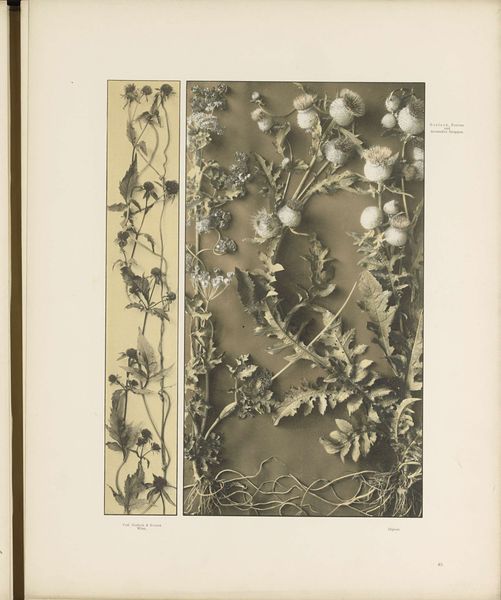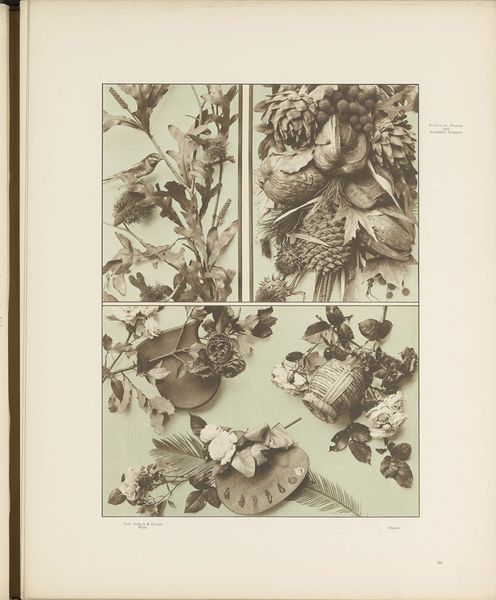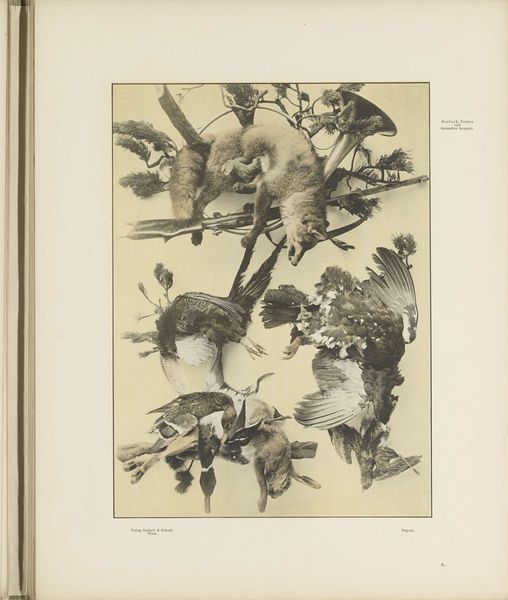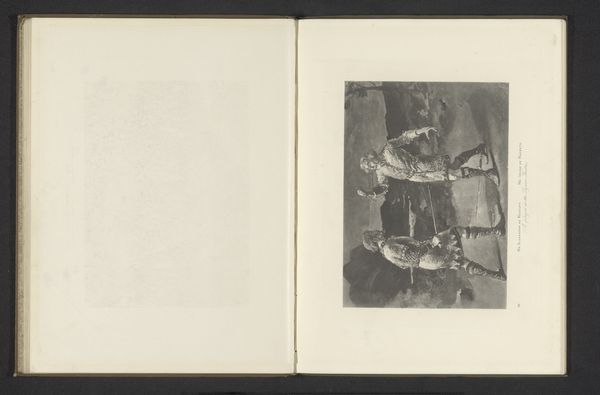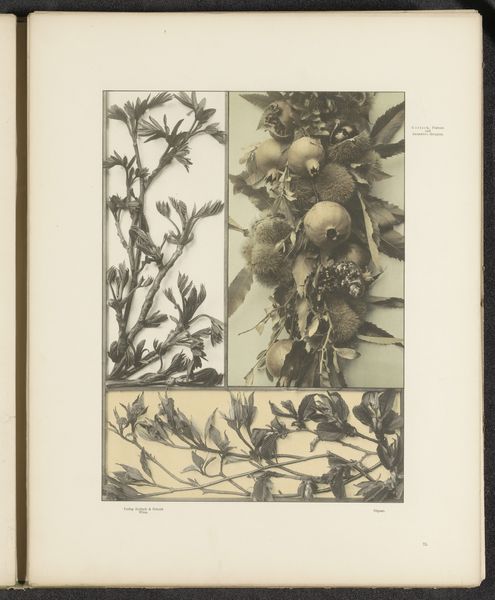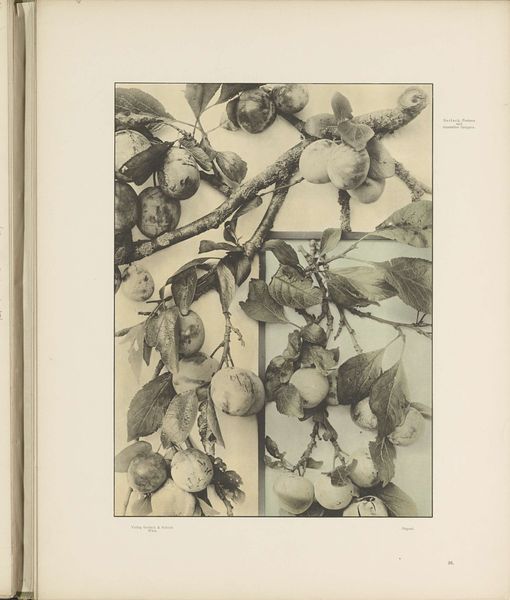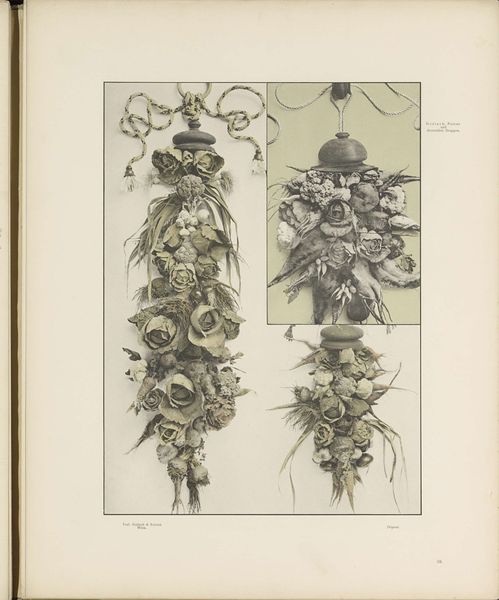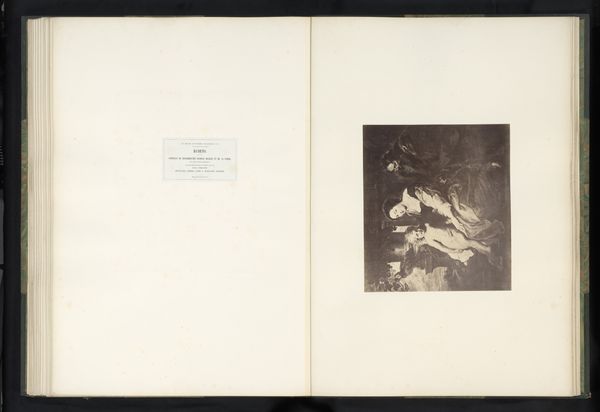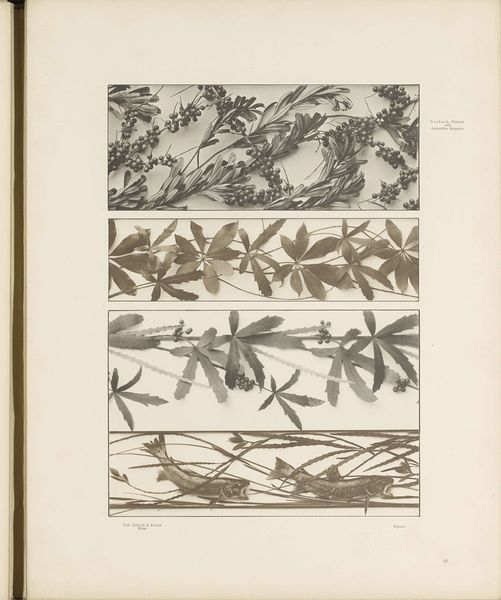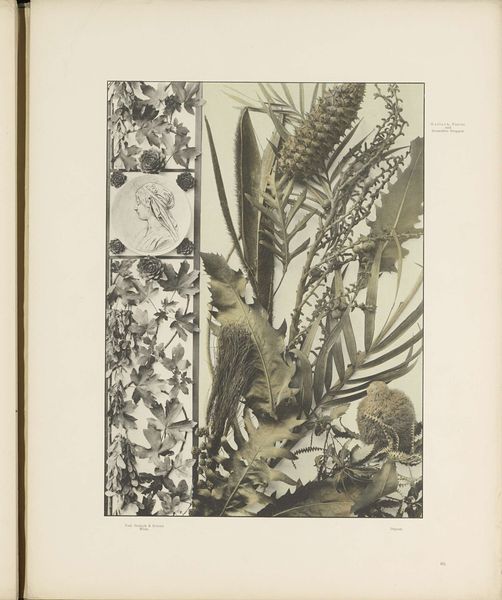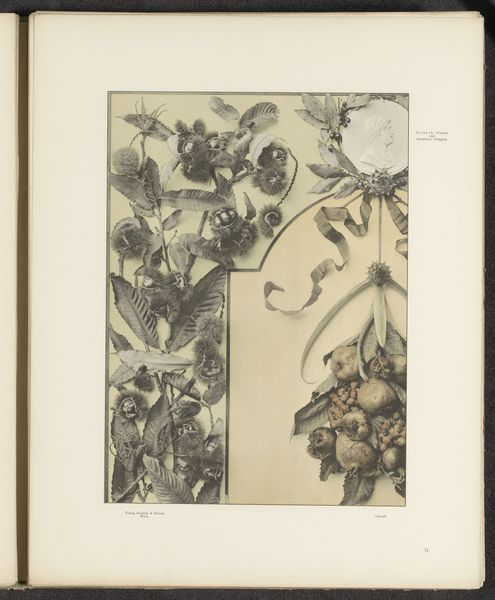
Twee festoenen van kreeft, vis en netten en een vlakvulling van schelpen before 1897
0:00
0:00
print, photography
# print
#
photography
Dimensions: height 295 mm, width 215 mm
Copyright: Rijks Museum: Open Domain
Editor: This is an intriguing photogravure titled "Twee festoenen van kreeft, vis en netten en een vlakvulling van schelpen," created before 1897 by an anonymous artist. It features two swags of seafood, including crab, fish, and fishing nets, next to an arrangement of seashells. It almost looks like a record of a day's catch... What do you make of this composition? Curator: The beauty lies in its deliberate construction. These aren't just objects, but materials speaking of a very specific process, a labor. I'm curious about how the seafood itself was obtained, prepared, and presented. The shells on the other hand speak of decorative and artistic expression. Editor: So, you are focusing more on the 'how' than the 'what' here? Curator: Precisely. Think of the fishing nets; each knot tied represents human labor and the desire to master the sea. What does this organization say about material hierarchies and about art itself? Was it meant to look opulent and showcase wealth? Or was it conceived for another purpose? Editor: It is interesting to think that something utilitarian and decorative are put together in the same plane and question traditional separations in art... Are you seeing a tension in this image between craft and art, in a sense? Curator: Exactly! And what about consumption? These aren't abstract shapes, these were the product of somebody's work to put food on the table. Looking at how materials intertwine, where they come from and the labor they stand for transforms this still life from an aesthetic object to a documentation of material life. Editor: I will definitely think more deeply now about how art intersects with processes and materiality when viewing images! Curator: Excellent! Remember that every image contains stories of labor, materiality and production; we simply need to train ourselves to see them.
Comments
No comments
Be the first to comment and join the conversation on the ultimate creative platform.
